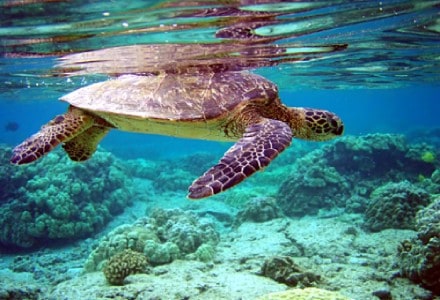
Green Sea Turtle Facts
- You would think that the Green Sea Turtle has a green shell and body, right? But, despite the quite common assumption, that’s not the reason for it. The real reason for its name is rather far more colorful.
- The actual source of the term, however, is quite amazing in itself. Under the carapace of this gorgeous ocean-dwelling creature sits a layer of body fat that is actually green in color.
- The Green Sea Turtle also exists throughout the tropical and subtropical waters of the world. The species migrates enormous distances between where it lives and feed, and its breeding grounds.
- Further, females often swim thousands of miles to breed. Following that, they then have to struggle onto beaches, and dig nests to lay their eggs. During this time, they remain highly vulnerable.
- Though it now constitutes a protected species, the species still remains endangered, primarily due to habitat loss.
Related Articles
Kemps Ridley Sea Turtle Olive Ridley Sea Turtle Pinta Island Tortoise
Green Sea Turtle Physical Description
Most notably, the color patterns of the carapace of the Green Sea Turtle actually change over time. Newborns primarily appear dark in color. As these age, they slowly turn to olive and then mottled green in color (much like the hair of humans turning gray).
The reptile also averages about 5 ft (1.5 m) in length and weighs an average of roughly 420 lb (190 kg). Meanwhile, however, exceptional individuals have reached weights of nearly twice this.
Its body is generally flattened in shape, the snout remains short, and the beak develops unhooked. The limbs grow understandably paddle-shaped, and quite powerful, making it a strong swimmer.
- Kingdom: Animalia
- Phylum: Chordata
- Class: Reptilia
- Order: Testudines
- Family: Cheloniidae
- Genus: Chelonia
- Species: C. mydas
Green Sea Turtle Distribution, Habitat, and Ecology
As juveniles, the Green Sea Turtle is primarily carnivorous. Yet, the adults are principally herbivorous, feeding on a variety of algae and kelp. Talk about mellowing with age.
The turtle actually inhabits different types of habitat during different stages of its life. For example, the young typically spend their first 5 years in pelagic waters, rarely being seen. Mature individuals prefer to inhabit lagoons, inshore bays, and shoals with seagrass meadows.
The only natural predators of adults appear to be large sharks and humans (no surprise on that one). The young, however, are often easy prey for shorebirds, marine mammals, and even crabs.
Green Sea Turtle Threats and Conservation
Despite its protected status, the Green Sea Turtle remains under threat in some parts of the world. These threats include illegal hunting and egg harvesting.
Additionally, it also faces unintentional threats, which present an even greater danger to their continued existence. These include strikes by boats, trawler nets, and habitat loss.
In recent years, chemical pollution of the ocean has also led to a significant increase in the presence of tumors among individuals studied in random monitoring.
The IUCN lists the Green Sea Turtle as Endangered and continues to stress that, while efforts to protect the species are in effect, the need for more extensive efforts grows greater every year.
Species Sharing Its Range
Blue Shark Great White Shark Feather Starfish
Check out our other articles on 6 Amazing South American Species, Pellucid Hawk Moth, Flamboyant Cuttlefish, Mountain Chicken, Iridescent Bark Mantis, Javan Rusa

